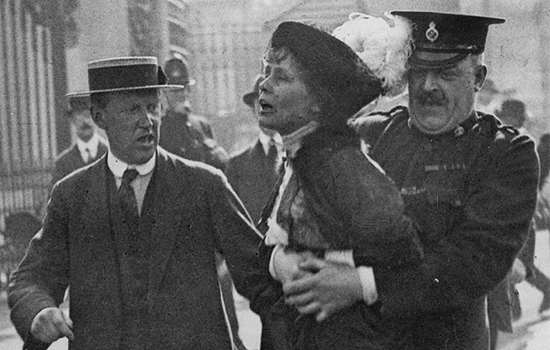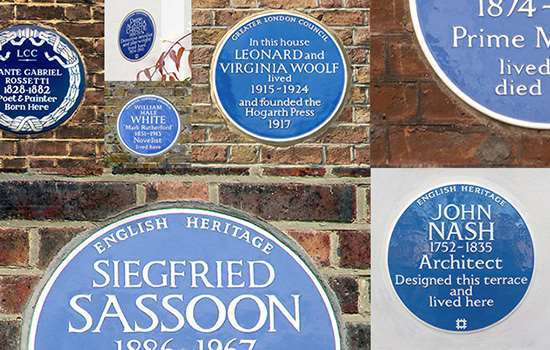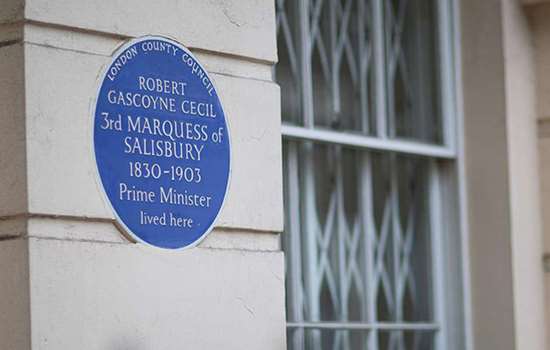TRAVERS, P.L. (1899-1996)
Plaque erected in 2018 by English Heritage at 50 Smith Street, Chelsea, London , SW3 4EP, Royal Borough of Kensington and Chelsea
All images © English Heritage
Profession
Author
Category
Journalism and Publishing
Inscription
P.L. Travers 1899-1996 Author of Mary Poppins lived and worked here 1946-1962
Material
Ceramic
PL Travers wrote the internationally famous children’s book series, Mary Poppins. While living at 50 Smith Street in Chelsea, she published the fourth book in the series and negotiated the rights for her books to be turned into a Walt Disney musical.
AUSTRALIA TO LONDON
Travers was born Helen Lyndon Goff in Queensland, Australia. Her father, Travers Robert Goff, instilled in her a love of myth and poetry, but he died when Travers was only eight years old. When her grieving mother left the house one stormy night – apparently to commit suicide – Travers invented a story of a magic horse to comfort her siblings. She later indicated this character was an early prototype for Mary Poppins.
Travers showed an early flair for writing. She wrote poetry as a child, and published articles and poems for a variety of Australian newspapers in magazines in her adolescence. After a brief stint as an actress and dancer, she sailed for London.
MARY POPPINS
Arriving in London in 1924, Travers pursued her ambitions as a poet. She made contact with the editor of the Irish Statesman, George William Russell, who published her work and introduced her to a literary circle that included WB Yeats and George Bernard Shaw. By 1928 Travers was writing mostly prose, and in 1934 she published Mary Poppins, soon followed by Mary Poppins Comes Back (1935).
The books were an immediate and enduring success. A controlling force, able to make magic and possessed of spiritual understanding, the enigmatic character of Mary Poppins captured the imagination of children everywhere. Although the books – originally illustrated by Mary Shepard, the daughter of EH Shepard – were accepted as children’s classics, Travers always maintained the books were equally intended for an adult audience.
SMITH STREET AND WALT DISNEY
Despite the success of the books, it was the Walt Disney musical that transformed the character of Mary Poppins into an icon. Travers had resisted selling the rights to the films for 20 years, but while living at 50 Smith Street she finally agreed to let Mary Poppins transition onto the big screen.
Travers lived at 50 Smith Street from about 1945–46 until December 1962 – a period of around 17 years. She raised her adopted son, John Camillus Hone, at number 50 and split her time between London and New York. In 1952 she published the fourth Mary Poppins book, Mary Poppins in the Park.
Disney made the offer to produce a film of Mary Poppins in early 1959, and two years later Travers attended pre-production meetings in Los Angeles, championing points such as the Edwardian setting of the movie. She even presented a photograph of 50 Smith Street ‘so they could see the Banks house was quite like hers, except with more to the garden’.
Ultimately, however, Travers was sidelined by Disney, and she had to actively request an invitation to the 1964 Hollywood premiere. Travers felt the musical sugar-coated the dark undertones of her stories, but the film nevertheless won five Oscars and launched Travers into a decade of fame.
Nearby Blue Plaques
More About Blue Plaques



